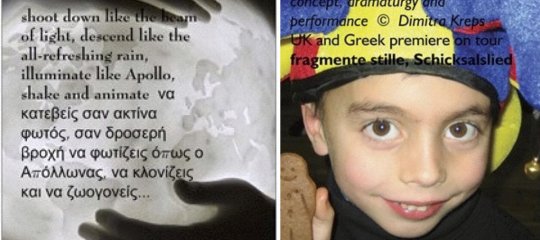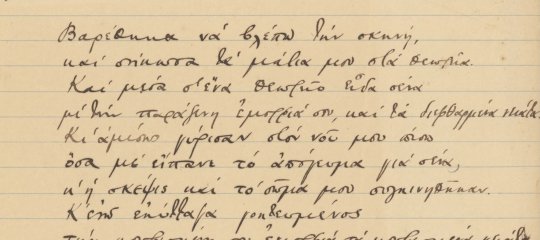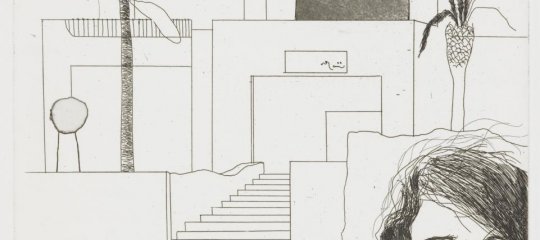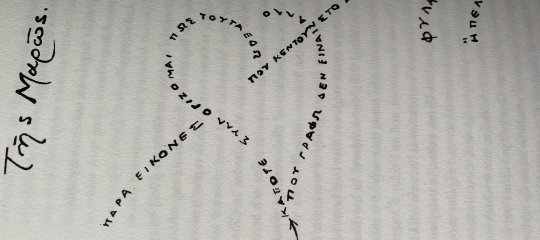Οικονομικό Παν/μιο της Σμύρνης (αρχάριοι)
ΟΙΚΟΝΟΜΙΚΟ ΠΑΝΕΠΙΣΤΗΜΙΟ ΤΗΣ ΣΜΥΡΝΗΣ
GRK 101 MIDTERM
08/12/2006
Όνομα:
Επίθετο:
|
Άσκηση |
Α |
Β |
Γ |
Δ |
Ε |
Ζ |
Η |
Θ |
Ι |
Κ |
||
|
Βαθμοί |
15 |
5 |
10 |
10 |
6 |
15 |
9 |
5 |
15 |
10 |
||
|
Σύνολο |
|
|
|
|
|
|
|
|
|
|
||
|
|
Βαθμοί |
100 |
||||||||||
|
Σύνολο |
/100 |
|||||||||||
| A. Διάβασε το κείμενο και απάντησε στις ακόλουθες ερωτήσεις: | (2Χ5=10) |
Με λένε Άννα είμαι από την Πάτρα αλλά μένω στην Αθήνα, στο Κολωνάκι. Είμαι παντρεμένη και έχω δυο παιδιά, ένα αγόρι και ένα κορίτσι. Ο άντρας μου, ο Νίκος είναι αρχιτέκτονας. Το όνομα της κόρης μου είναι Κατερίνα. Η Κατερίνα είναι τριάντα χρονών αλλά δεν είναι παντρεμένη. Δουλεύει σε ένα σχολείο στην Καβάλα. Αυτή είναι μαθηματικός. Ο γιος μου, ο Δημήτρης είναι είκοσι έξι και δεν δουλεύει. Είναι μουσικός και τώρα μαθαίνει Ισπανικά. Εγώ είμαι γραμματέας, μιλάω αγγλικά και γερμανικά. Μου αρέσει πολύ η δουλειά μου γιατί(because) αγαπάω τις γλώσσες.
1. Που μένει η Άννα;
.............................
2. Τι δουλειά κάνει ο άντρας της;
.............................
3. Πόσα παιδιά έχουν;
.............................
4. Πόσω χρονών είναι ο Δημήτρης;
.............................
5. Που δουλεύει η Κατερίνα;
.............................
|
Απάντησε Σωστό ή Λάθος: |
(1X5=5) |
| Σ | Λ | |
| 1. Η Άννα μιλάει γαλλικά. | ||
| 2. Η κόρη τους δε δουλεύει. | ||
| 3. Η Κατερίνα είναι ελεύθερη. | ||
| 4. Ο Δημήτρης είναι μουσικός. | ||
| 5. Η Κατερίνα αγαπάει πολύ τις γλώσσες. |
| Β. Γράψε τους αριθμούς με γράμματα: | (1Χ5=5) |
1. 12.............................
2. 49.............................
3. 105.............................
4. 307.............................
5. 2000.............................
| Γ. Βάλε το σωστό άρθρο ο, η, το: | (1Χ10=10) |
| 1. ........... κέρμα | 2. ............ φάκελος | 3. ........... στυλό |
| 4. ........... εφημερίδα | 5. ........... μηχανή | 6. ........... ρολόι |
| 7. ........... αναπτήρας | 8. ........... λάμπα | 9. ........... φακός |
| 10. ........... μαχαίρι |
| Δ. Βάλε το σωστό κτητικό: | (1Χ10=10) |
1. Η γυναίκα............ είναι από την Γαλλία. (ο Χρήστος)
2. Το κινητό........... είναι 6932779827. (εγώ)
3. Που είναι το σπίτι ........... ; (ο Γιώργος και η Χρύσα)
4. Η κόρη ........... είναι μαθήτρια. (εμείς)
5. Που μένει ο αδελφός ...........; (εσύ)
6. Το παιδί ........... μένει στην Γερμανία. (η Ελένη)
7. Που είναι ο υπολογιστής ...........;(η αδερφή μου κι εγώ)
8. Η διεύθυνση ...........είναι Πατησίων 24, Χαλάνδρι. (εμείς)
9. Ο άντρας ........... δουλεύει στο Τάνσας. (η Νανά)
10. Από πού είναι ο μπαμπάς ...........; (εσείς)
| E. Διάλεξε το σωστό: | (1Χ6=6) |
1. Συγνώμη, ........... τραπέζι πόσο κάνει;
Α) αυτή η Β) αυτός ο Γ) αυτό το
2. Το άγαλμα κάνει ........... λίρες.
Α) τρεις Β) τρία Γ) δεκατρία
3. ...........ομπρέλα είναι πολύ ωραία.
Α) αυτή η Β) αυτό ο Γ) αυτί η
4. Το μαξιλάρι έχει........... ευρώ.
Α) τριαντατέσσερις Β) τέσσερις Γ) τέσσερα
5) Θα ήθελα ........... σοκολάτα.
Α) ένας Β) μια Γ) ένα
6) Συγνώμη έχεις........... τσιγάρο;
Α) ένας Β) μια Γ) ένα
| Z. Γράψε κάτω από κάθε εικόνα το αντίστοιχο επάγγελμα: | (1,5Χ10=15) |
 |
 |
 |
| 1............................. | 2............................. | 3............................. |
 |
 |
 |
| 4.................................... | 5.................................... | 6.................................... |
 |
 |
 |
| 7............................. | 8................................... | 9............................. |
 |
||
| 10.................................... |
| Η. Μετέτρεψε τις προτάσεις από τον ενικό στον πληθυντικό ευγενείας: | (1,5X6=9) |
- Είσαι από το Λονδίνο;
.............................
- Δουλεύεις πάρα πολύ
.............................
- Έχεις αναπτήρα;
.............................
- Εσένα σε λένε Γιάννη;
.............................
- Που μένεις Χρήστο;
.............................
- Τι κάνεις Σοφία;
.............................
| Θ. Γράψε τις γλώσσες που μιλάνε σε κάθε κράτος: | (1Χ5=5) |
1. Στην Αίγυπτο μιλάνε.............................
2. Στην Κίνα μιλάνε .............................
3. Στην Τουρκία μιλάνε .............................
4. Στην Ελλάδα μιλάνε.............................
5. Στην Ιαπωνία μιλάνε.............................
| Ι. Βάλε τα ρήματα στην κατάλληλο πρόσωπο: | (1Χ15=15) |
1. Ο Πάνος............................. δυο παιδιά. (έχω)
2. Τι............................. η μαμά σου; (κάνω)
3. Κύριε ........... που ........... η οδός Τσιμισκή; (ξέρω – είμαι)
4. Ονούρ ............................. Ιταλικά; (μιλάω)
5. Εγώ .............................πολύ την Τουρκία. (αγαπάω)
6. Η Έλσα και η Τάνια............................. στην Αθήνα. (μένω)
7. Εμείς ............................. από την Αυστρία. (είμαι)
8. Η Μινέ ............................. γαλλικά. (μαθαίνω)
9. Εσείς ............................. πολύ καλά. (μιλάω)
10. Εσύ που .............................αγγλικά; (μαθαίνω)
11. Εγώ ............................. ένα μαχαίρι παρακαλώ. (θέλω)
12. Αυτοί ............................. πάρα πολύ. (δουλεύω)
13. Πόσο ............................. ένα σπίτι στην Ελλάδα; (κάνω)
14. Αυτός ............................. την Κατερίνα. (αγαπάω)
| Κ. Γράψε για τον εαυτό σου: | (2Χ5=10) |
1. Πως σε λένε;
.............................
2. Από πού είσαι;
.............................
3. Που μένεις;
.............................
4. Πόσω χρονών είσαι;
.............................
5. Τι δουλειά κάνεις;
.............................
ΦΙΝΑΛΕ
| Η. Βάλε την σωστή αντωνυμία στην κάθε πρόταση | 1Χ10=10 |
1. ............................. κάνει αυτή η καρέκλα;
2. ............................. μένει η Οζγκέ;
3. ............................. κάνει ο πατέρας σου;
4. ............................. χρονών είναι ο Αλέκος;
5. ............................. παιδιά έχετε;
6. ............................. δουλεύει ο αδελφός της;
7. ............................. είναι το βιβλίο μου;
8. ............................. σε λένε;
9. ............................. σημαίνει μπράδερ στα αγγλικά;
10. .............................. έχει ένα πακέτο τσιγάρα στην Τουρκία;










